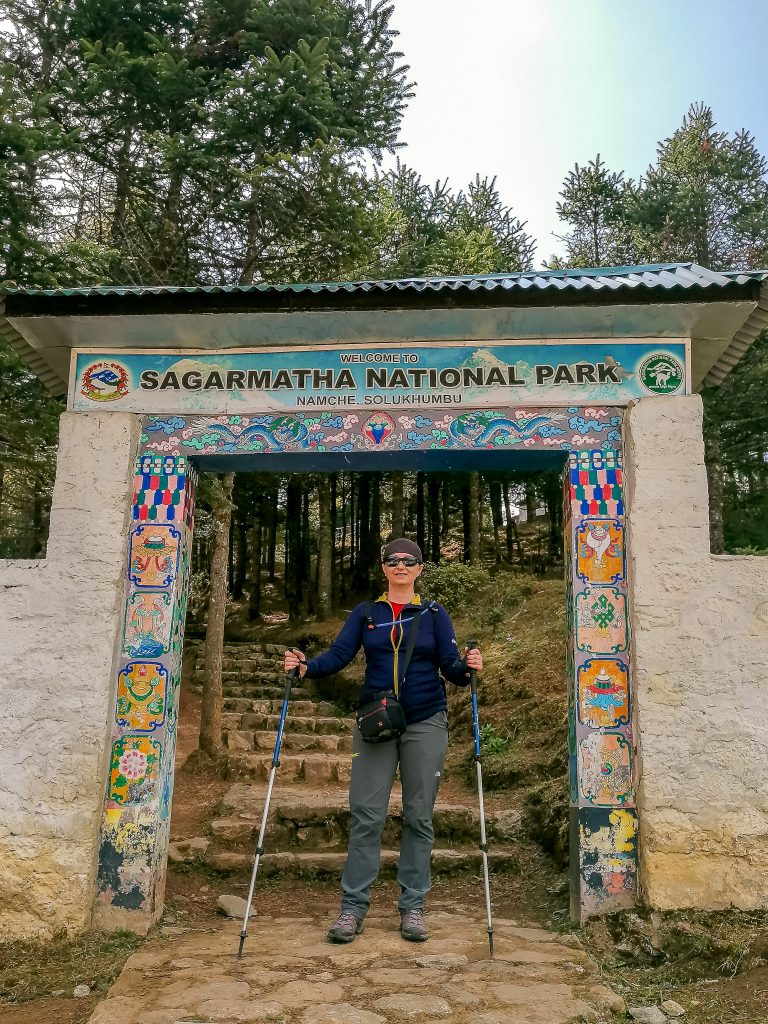Last Updated on: 23rd October 2023, 06:02 am
Would you like to do the Everest Base Camp Trek but you don’t know how to prepare for it? You’ve come to the right place. I completed the EBC Trek in May 2022, having prepared for it about six months.
I’ll explain exactly what I did, how I trained and why I had chosen this type of training.
Whether it should work for you, I can’t tell. Apparently, it worked for me. I didn’t experience any symptoms of high altitude sickness other than fatigue and mental fog. However, it seems that genetics plays an important role in this. Maybe I have good genes. Maybe I ate the right foods to keep me in good shape.
Main Topics of Training for Everest Base Camp Trek
Main Directions to Train for Everest Base Camp Trek
It comes without saying that you need to be able to hike for many hours in a row and to recover very fast after effort. Your muscles need to be strong enough to bear not only your weight, but also the weight of your backpack.
Improve the Oxygen Uptake or Maximal Aerobic Capacity (Vo2Max) – HIIT Training
At altitudes over 4000m oxygen in the air is scarce. The more your body can utilize it, the better. Here’s a scientific article about Vo2Max and about the effects of regular exercise on the cellular function. If you want to know more about V02Max and aerobic fitness measurement protocols, check out this article.
If you don’t care much about science but you want some hands-on protocols to train for Everest Base Camp trek, all you need to know is that you should aim to improve your performance in aerobic endurance situations. Trekking at high altitude for two weeks is such a situation. You’ll need endurance rather than athletic performance.
Briefly, you want to improve your aerobic fitness or cardiovascular endurance, which is your body’s ability to deliver oxygen to your muscles. In other words, you want to increase the number of mitochondria in your muscle cells.
For Bolt and his fellow sprinters, a few minutes seems like an age. But for marathon runners, there is much farther to go. To reach the finish line, these endurance athletes rely on a slower, but more efficient way to generate ATP that uses oxygen to burn fats and carbohydrates, in structures inside the cell called mitochondria.
The above quote comes from an article in Nature, one of the most trustworthy science journals. The article teaches us that mitochondria are extremely trainable and dynamic. As little as 14 days of sustained exercise can increase the quantity of mitochondria in our muscles. Apparently, high intensity interval training (HIIT) is the best protocol you can apply to promote mitochondria generation and to enhance physical stamina. Here’s another take from the above-mentioned article:
Research shows that the mitochondria in leg muscles of endurance-trained athletes have more inner membrane folds (called cristae) than those of people who exercise recreationally, this increases the ratio of surface to mitochondrial volume1. These cristae are where important enzymes attach and pass on electrons during cellular respiration; more folds means more oxygen uptake in muscle.
My HIIT training of choice: pool swimming, 3-5 times a week, 40-60 minutes, in intervals of 2-3 minutes of swimming alternating with rest periods of 1-2 minutes.
This choice was based on insight from the Huberman Lab podcast by Andrew Huberman, one of the most intelligible scientists I’ve ever listened to. Here’s the episode that shares effective endurance building tools:
Leg Muscles Strengthening – Climbing Stairs, Walking or Hiking
If you aren’t used to walking long distances, you’re going to suffer on the EBC trek. I’m a walker even when I don’t train for anything. I aim for a minimum daily average of 10,000 steps anyway.
For the purpose of EBC trek training, I increased this to 15,000 steps per day, give or take. Bucharest, my home city, is rather flat, so finding hills wasn’t easy. I took brisk walks almost everyday. I ditched elevators and climbed a lot of stairs.
Stair climbing is the best way to train your legs for the Everest Base Camp trek.
Whenever possible, stuff your backpack with some heavy items and carry it on your back while climbing stairs or walking.
If possible, go on mountain hiking trips at least every other weekend (I didn’t because I hate hiking in the winter and I don’t have proper gear for that, anyway).
Rapid Deliberate Breathing Method – Wim Hof, Tummo or Deliberate Hyperventilation
According to scientists, about 25 cycles of rapid deep breathing can make a healthy individual feel very alert. The reason why this happens is that the rapid movements of the diaphragm trigger the adrenals to release adrenaline into your system. If you want to know more about this breathing technique, you can either search the web for Wim Hof breathing or watch this Huberman Lab video (from minute 00:46:40)
I did this once a day, just before going to sleep. I also used the rapid deliberate breathing method once while on the EBC trek, because I started to feel my extremities getting numb and I was afraid altitude sickness might have kicked in. The numbness went away quickly after this exercise.
How Much Time To Train for Everest Base Camp Trek
The longer you can train, the better. I was unfit, as I had stopped swimming and other gym training for almost two years. I had also stopped mountain hiking.
I made the decision to go to Everest Base Camp in late October. I trained for five months, from November to March.
Early April (or late March) I sprained an ankle, so I had to stop all training to ensure my ankle would heal.
I must have done something right with my Everest Base Camp training, as I was able to complete it without problems and without taking one single pill for the entire duration of the trek.
Maybe I also chose the best time to go to Everest Base Camp, even though the sky was rather cloudy for the most part of it.

- Ramla Beach Gozo, Maybe the Best in Malta - April 9, 2024
- Where To Go on Honeymoon: List of the Most Interesting Countries - April 9, 2024
- A Guide to Nepal Treks from India - April 5, 2024

